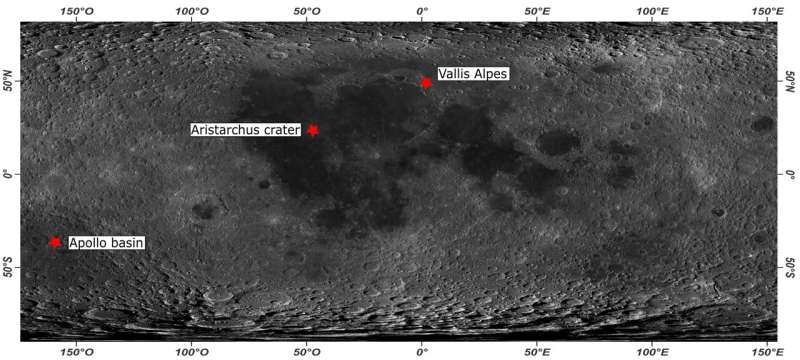This article has been reviewed according to Science X's editorial process and policies. Editors have highlighted the following attributes while ensuring the content's credibility:
fact-checked
peer-reviewed publication
trusted source
proofread
Researchers develop MoonIndex, open-source software that allows study of lunar surface

With MoonIndex, researchers from Constructor University and the National Institute of Astrophysics in Italy have developed an open-source software that for the first time gives scientists access to a free tool that creates science-ready products from the Moon Mineralogy Mapper (M3) to study the composition of the lunar surface. It also enables a wide range of applications.
An article now published in the specialist journal Earth and Space Science describes the research success.
"Spectral indices are a key product to understanding and mapping planetary surfaces," said Javier Eduardo Suárez Valencia, Ph.D. student at Constructor University and first author of the article.
Each surface has a very special, individual reflectance pattern, a kind of spectral fingerprint. It provides information about the presence of certain minerals in rocks or about the physical properties of the surface. For example, the researchers have identified minerals from the olivine group and anorthosite.
In total, they have modeled 39 indices for the investigation of the lunar surface. M3 is an imaging spectrometer that provided the first high-resolution spatial and spectral map of the entire lunar surface, revealing the minerals of which it is made.
"MoonIndex is a reliable and versatile tool for analyzing the composition of the lunar surface," said geologist Suárez-Valencia. The natural resources of the moon could be used for future missions into space. MoonIndex is also useful for identifying suitable landing sites. The researchers hope that the free and open-source software, written in the Python programming language, will contribute to the democratization of science.
MoonIndex comes at the right time. There is great interest in exploring the moon. Various countries have launched lunar missions this year or are planning to do so. For example, in preparation for a moon landing, the U.S. space organization NASA wants to launch the Artemis 2 mission in November, which is intended to put several astronauts in orbit around the moon.
More information: Javier Eduardo Suárez‐Valencia et al, MoonIndex, an Open‐Source Tool to Generate Spectral Indexes for the Moon From M3 Data, Earth and Space Science (2024). DOI: 10.1029/2023EA003464
Journal information: Earth and Space Science
Provided by Constructor University





















